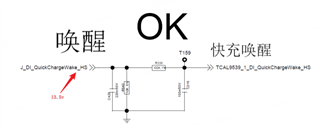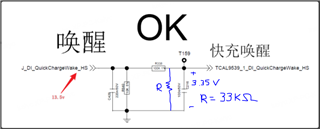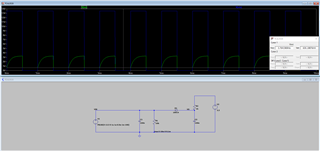Other Parts Discussed in Thread: TCA9539-Q1, TCAL9539
Hi Expert,
Customer is using one of the IO to detect 13.5V high level signal, you can find the portion of schematic as below.
They placed a 100K series resistor before input to TCAL9539-Q1. I would like to check with you if the configuration is reasonable? Customer mentioned that this input pin damaged after the input 13.5V signal. After damage, they can always see 3.3V signal on this IO pin.
Please help check if it can be used to sense 13.5V signal and how to design.

Thanks!
Ethan Wen







